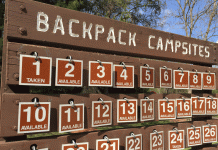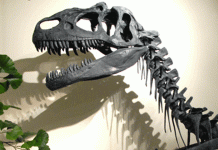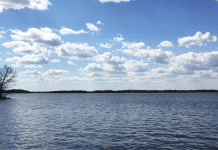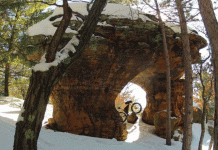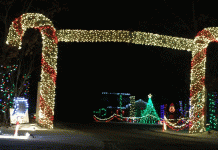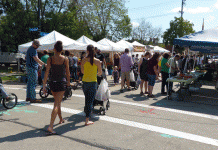Historic Grotto Full of Wonder
Tranquil and bursting with natural beauty, the Rudolph Grotto Gardens is a fascinating gem in the heart of Rudolph.
The 7.5 acre site, located behind St. Phillips church, includes twenty-six impressive rock shrines, several war memorials and the popular Wonder Cave. Anyone can enjoy the experience the gardens provides, one of peace and wonder, while wandering through the many flower beds and rock formations. The gardens are free with a small fee to enter the cave.
The Grotto, as a garden, is best enjoyed from May to October but otherwise is open year-round. The large variety of flowers for the flowerbeds and shrines are mostly donated by local greenhouses.
Enjoy a picnic lunch on the site (which can also host events) and allow two or three hours to fully explore all the grotto’s wonders.
 At first deceptively simple, the gardens become more complex as you walk further in until it becomes an imaginative labyrinth of rock formations. Begin with the Ten Commandments shrine embedded with silvery sea shells, and then see the miniature Grotto Church just past it, built and designed by creator Father Phillip Wagner in 1940 after the Castle on the Rhine. Peer through the little window in the front: Inside is a miniature church with an altar and hanging light fixtures.
At first deceptively simple, the gardens become more complex as you walk further in until it becomes an imaginative labyrinth of rock formations. Begin with the Ten Commandments shrine embedded with silvery sea shells, and then see the miniature Grotto Church just past it, built and designed by creator Father Phillip Wagner in 1940 after the Castle on the Rhine. Peer through the little window in the front: Inside is a miniature church with an altar and hanging light fixtures.
At the heart of the grotto, rocks spring out of the ground in the form of pillars, paths, bridges, and arches embedded with colored glass. An elevated path offers a good view of the small pond. Watch the water wheel turn and follow the winding path, circling underneath the Last Supper Shrine while marveling at the way the rocks are supported.
In one section, a line of shrines acts as cornucopias for different plants, which spill out of the rock in all sorts of colors. The shrines depict various scenes of Jesus’ death and resurrection. The huge Patriotic Shrine consists of seventy-eight tons of rock from a local farm near the picnic area. Other shows of patriotism exist in other parts of the Grotto, including a WWI and WWII memorial.
Underneath St. Jude’s chapel (a small, cabin-like structure), figurines fill alcoves in the walls. Sounds seem to dim underneath the chapel, and in so enclosed a space, the figurines appear with as much of a presence as if they were actually human.
The Wonder Cave, 1/5 of a mile long, is arguably the most ambitious project of the entire Grotto, having taken twenty years to complete. Construction for the cave began in 1935 and was completed in 1957, fashioned after the catacombs of Rome. Most of the rare lava rock for the project came from ten miles north of the grotto. Wind through the dark, winding path and discover all the secrets inside.
As fascinating as the Grotto itself is the history of how it came to be. The idea began in 1912 when Father Phillip Wagner fell ill while studying for the priesthood in Europe. He promised Mary that should his health be restored, he would build a shrine in her honor. Eventually his health improved and Wagner completed his priesthood and was ordained in 1915.
However, he knew that plenty of people wouldn’t be financially or physically able to visit spiritual places like he did and that he could provide them such a place of his own making, thereby also fulfilling his promise.
Wagner conducted a tour of Europe, gathering ideas and contacts for the statues he planned to use for the Grotto. He was appointed St. Philomena’s new pastor in 1917. When Wagner’s assigned church in Rudolph decided to move to a more central location in 1919, he decided to use the opportunity to build the gardens on the parish land. However, Wagner had no knowledge of masonry, and couldn’t even mix mortar. His lack of skills did not deter him.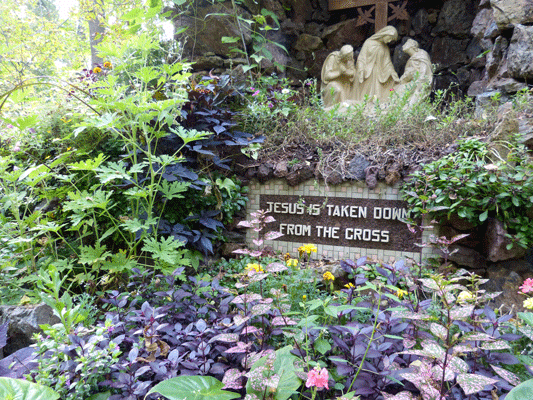
He began planting trees that year and collecting rocks from the area for future shrines, the first of which started construction in 1927. For these, he simply piled the stones. He was soon joined by a twelve-year old local farm boy called Edmund Rybicki, who would help Wagner build the grotto for decades.
For the more elaborate structures, Wagner began using concrete and built his structures by trial-and-error. The last project was completed in 1983, a quarter of a century after Wagner’s death (later projects were carried out by Rybicki and the church’s new pastor).
When finished exploring, check out the gift shop and then the museum to see photos and tools that were used to make the grotto. Afterwards, discover world-class cheese at the Dairy State Cheese Factory located nearby.




